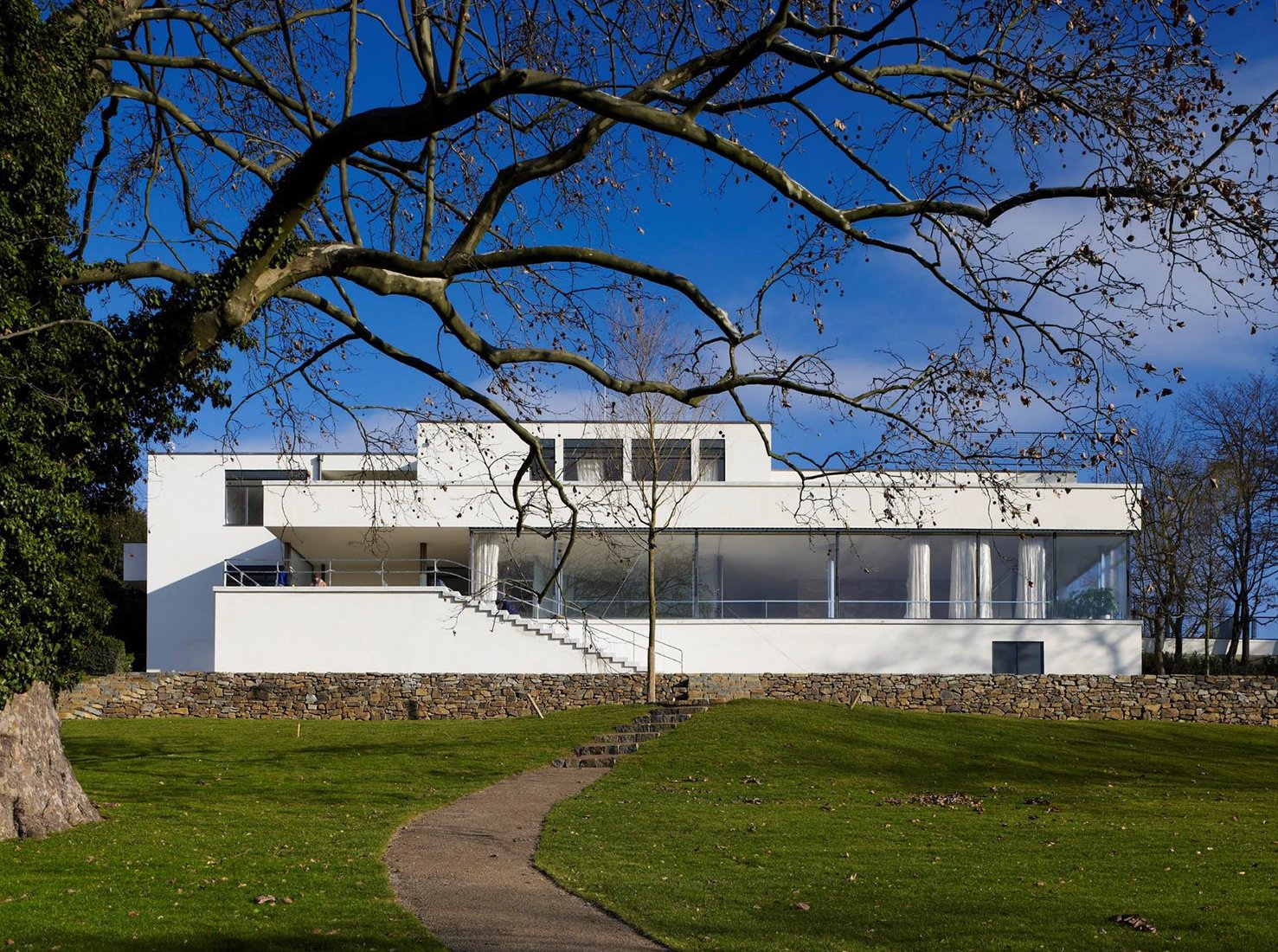#11296. White facade of Villa Tugendhat: modernist purity of form and panoramic glazing
The image shows a famous masterpiece of modernist architecture — Villa Tugendhat, designed by Ludwig Mies van der Rohe in the late 1920s and built in 1930 in Brno, Czech Republic. It represents one of the most significant examples of the International Style in residential architecture.
The building's facade demonstrates the classic principles of modernist architecture: clean geometric forms, minimalism, and functionality. The pristine white walls create a striking contrast with the surrounding nature and the stone base of the building. Particularly notable is the panoramic glazing of the lower floor — a revolutionary technique for its time that blurs the boundary between interior space and the natural environment.
The facade composition emphasizes horizontal lines, accentuated by the flat roof and ribbon windows. The stepped organization of volumes creates dynamism and a hierarchy of spaces. The open terrace with steel railings made of thin tubes, characteristic of modernism, emphasizes the idea of interpenetration between interior and exterior. The stone retaining wall at the base of the building organically integrates the structure into the existing landscape.
When designing your own house, you can borrow techniques such as: the contrast of white walls with natural materials, using large glazed areas for maximum connection with surroundings, laconic geometric forms, absence of decorative elements in favor of expressiveness of the architectural form itself, and terracing volumes for better interaction with the site's topography.
